With NBA 2K21, you just know what you're getting into--a basketball simulation with the presentation chops, star power, and gameplay mechanics to embody the sport on a professional and cultural level. You know you'll build a custom player to go through a story that leads into a full career and take to the streets and rec center for pick up games. You know you can play a management sim through MyGM or build a playable fantasy team through card packs in MyTeam. And you also know all too well about the scheme of VC that looms over it all, which remains one of the prominent offenders of intrusive microtransactions.
At this point, NBA 2K21 suggests that the franchise is out of surprises. It comes with a robust suite of modes, but despite minor remixing year after year, the annual releases are starting to blend together (if they haven't already). Mechanics get minor tweaks or additions, but largely remain untouched. So, for those embedded in the 2K cycle, you know what the deal is, but because this year's game changes things mostly on a surface level, it's hard to be excited about yet another entry.
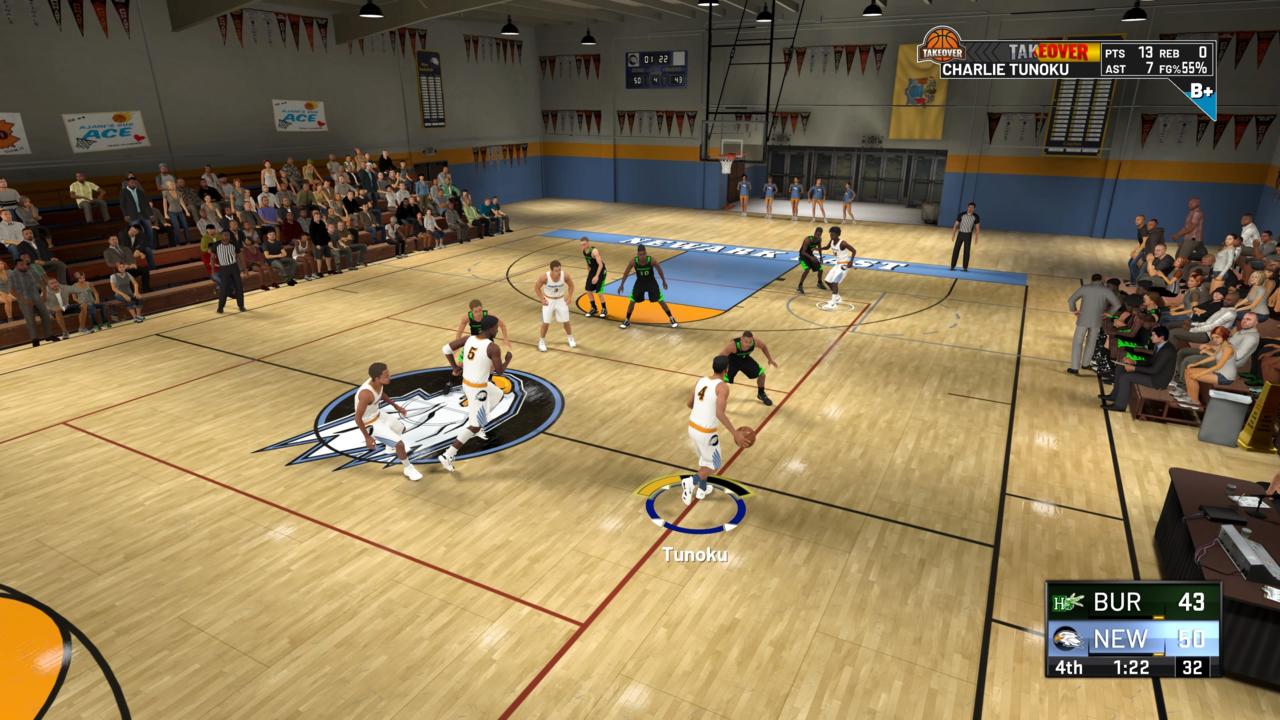
Don't get me wrong, as a lifelong basketball fan who embraced the culture as a wee lad and cherishes street ball memories from back home, I'm still a bit in awe of how well the sport has translated into video game form (I said as much in my NBA 2K19 review). And that doesn't just come from the player likenesses, character creation tools, or the broadcast-style presentation; it's a matter of the core gameplay, too.
Dribble moves with the right stick offer nearly full control of ball handling. It can feel a bit cluttered having so many actions mapped to slightly different motions on just one stick, as errant inputs can sometimes have you pull a pump-fake instead of the crossover you intended. But if you can master a few key moves, you'll be at an advantage for opportunities to drive to the basket or mitigate shot contesting. The same goes for making the right moves in the post-game to either get under defenders or get positioning over them. All of these have been staples of NBA 2K for quite some time.
The big new addition in terms of offense is the optional Pro Stick shooting. Prior to 2K21, shooting would either be done by holding down Square, X, or the right stick and timing your release at the height of your jump, indicated by a shot meter overhead. With Pro Stick shooting enabled, you hold the right stick down without having to worry about release timing and instead focus on accurate stick alignment according to the shot meter before your player releases the shot. While it's much easier to just use square or X for scoring in the paint, Pro Stick is a viable new alternative for jump shots, especially in situations when lag or latency can throw off traditional-style release timing.
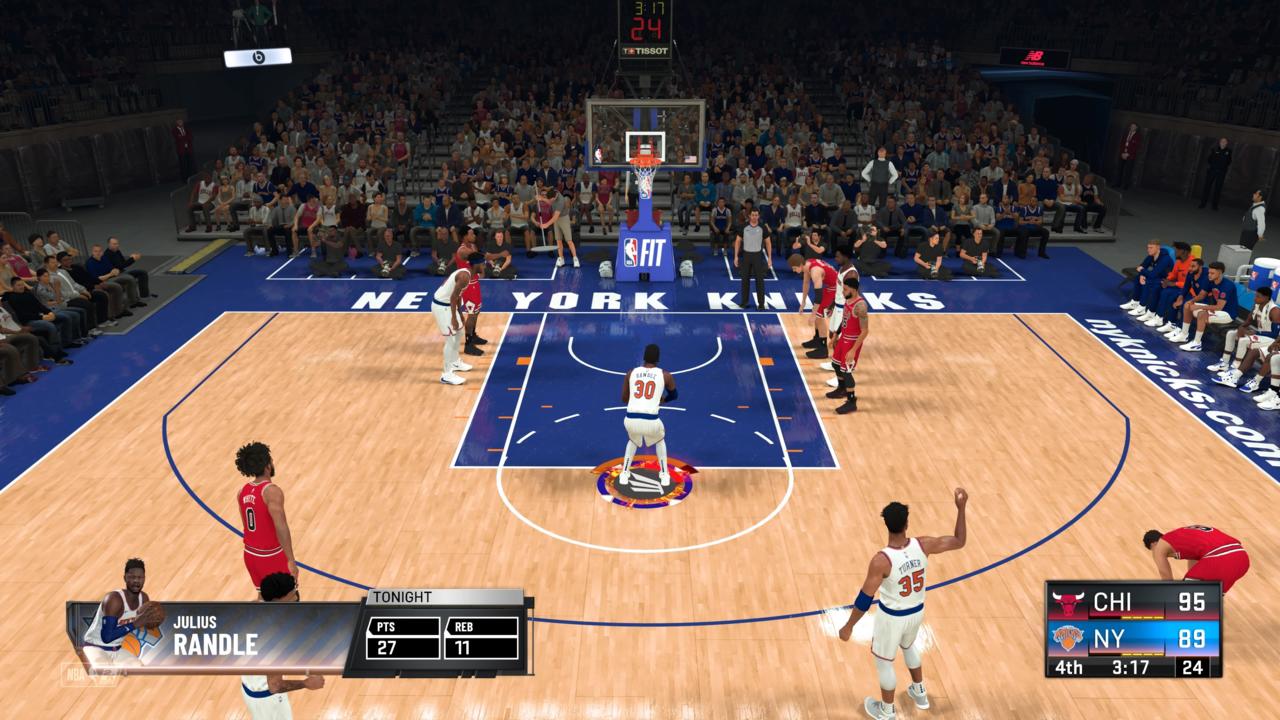
There aren't really any standout changes on the defensive side of the ball. Of course, you still need to stay locked in to track your matchup's movements, know when to press up, move laterally, contest shots, and fight over screens. But the sluggish nature of off-the-ball movement can still be a tiresome thing to struggle with when controls don't respond the way you intended or you simply run in place, stuck on teammates, and subsequently get punished for a defensive breakdown.
Every action in NBA 2K21 is deliberate and at higher levels of play, the game requires your full attention to succeed. By virtue of this, playing through actual matches--whether it be in MyCareer avenues or through full-team control in the various other modes--can be taxing, but extremely rewarding when you come away with that W.
The most rewarding aspect of NBA 2K is in the MyCareer path, and the same holds true for this year's game. You create a player, spec them out for a position, and build them further by specializing in certain basketball skills and stats. For example, I built my guy to be a point guard who can thread the needle when dishing assists, but one who can also easily finish with driving layups or mid-range jumpers.
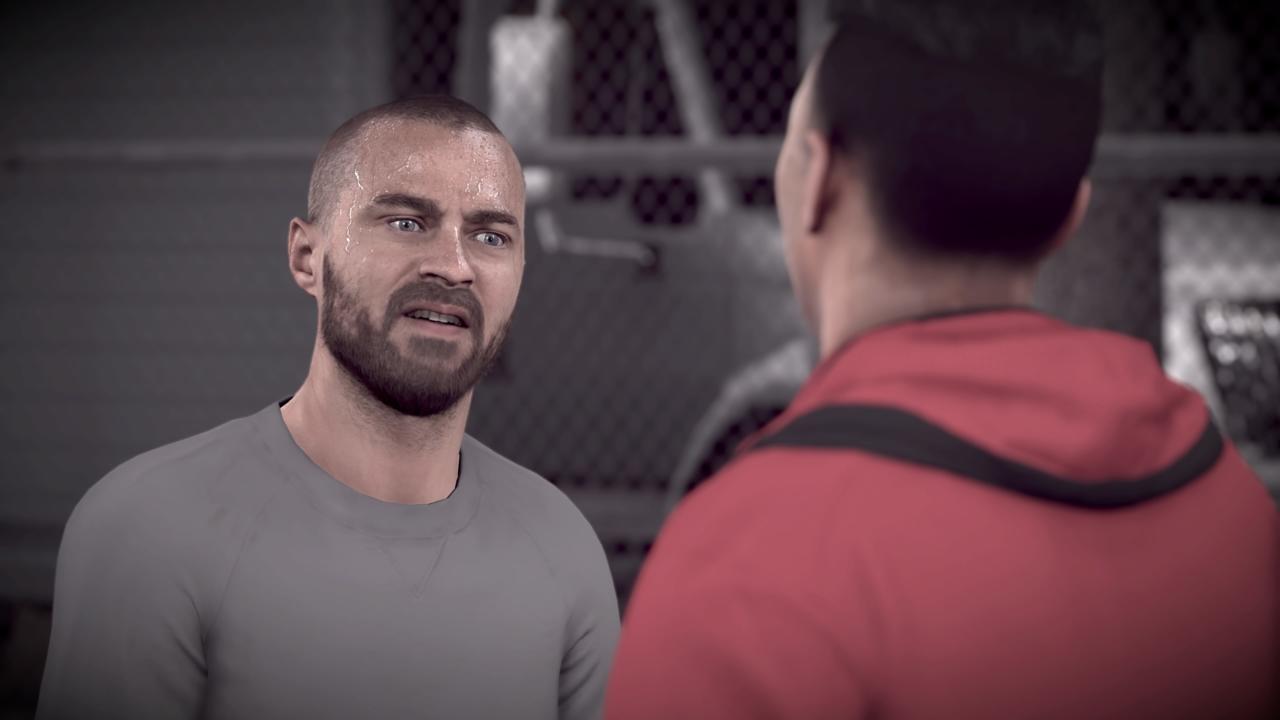
Once you've settled on your template and stat potentials, you go through a new yet familiar story of being a young, upcoming player leading into the NBA draft. Notable actors like Michael K. Williams, Djimon Hounsou, and Jesse Williams play roles in your cinematic-style story and deliver strong performances. But while some dramatic or pivotal moments draw you in for just a beat, it doesn't really add up to much or sensibly connect on a narrative front. There's a cheesy romantic subplot, petty player drama, a thread about your dad who apparently passed away but shows up in flashbacks (he's played by Jesse Williams and doesn't look a day older than your player, so that was confusing), and a somewhat shady family friend who can become your agent. Really, it's fancy set-dressing to usher you into the full roster of MyCareer activities.
Like past iterations, the level of depth that goes into building your player remains the strongest hook--this includes working your way into the starting lineup as an NBA player as you play through seasons, gaining endorsements, getting swagged out in new clothes and shoes, and playing in competitive pickup matches online.
Here, NBA 2K21 flexes one of its bigger changes with The Neighborhood, now centered around a Southern California beachfront. It's a refreshing change of scenery and a much more pleasant backdrop for this hub world where pick-up 3-on-3s and half-court 2-on-2s take place, and various facilities and shops are propped up. The functional purpose remains the same, but if anything, the new layout makes it harder to get to shops and facilities since they're placed on the streets opposite of the courts, rather than the outskirts surrounding the courts like in previous iterations.
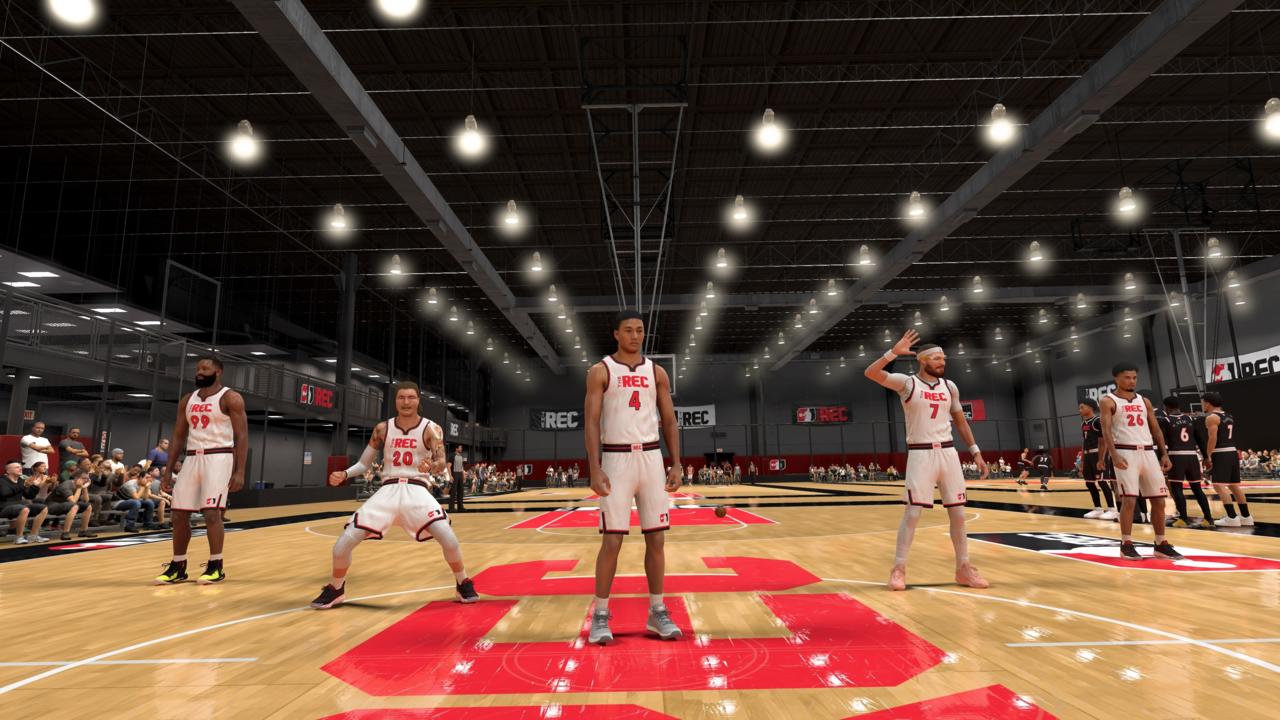
Matching up for games in The Neighborhood remains the same--it can be a slog, waiting for players to queue up and the game to cycle through all the pre- and post-game animations. I find the The Rec's 5-on-5 games much more satisfying with proper matchmaking (given that teams are balanced in skill and positions), and you can take this basketball ethos a step further in the organized Pro-Am league. But enjoyment from these competitive outlets relies on the players you get matched with, and also how much your player has progressed in order to keep up.
This is where virtual currency (VC) comes into play, yet again. It's no surprise that microtransactions litter every corner of NBA 2K21--and for me, I've moved on from being outraged to feeling despondent. The game borders on a pay-to-win model, with progression tracks that are paced in ways to nudge you towards paying for VC rather than earning it. Improving your stats still relies on spending VC, and the costs increase exponentially the further you upgrade a certain ability. There are plenty of nice cosmetics to earn, and it's admittedly a ton of fun dressing up your player in fresh kicks and the flyest Nike and Adidas apparel, but their steep VC costs suck the life out of the experience.
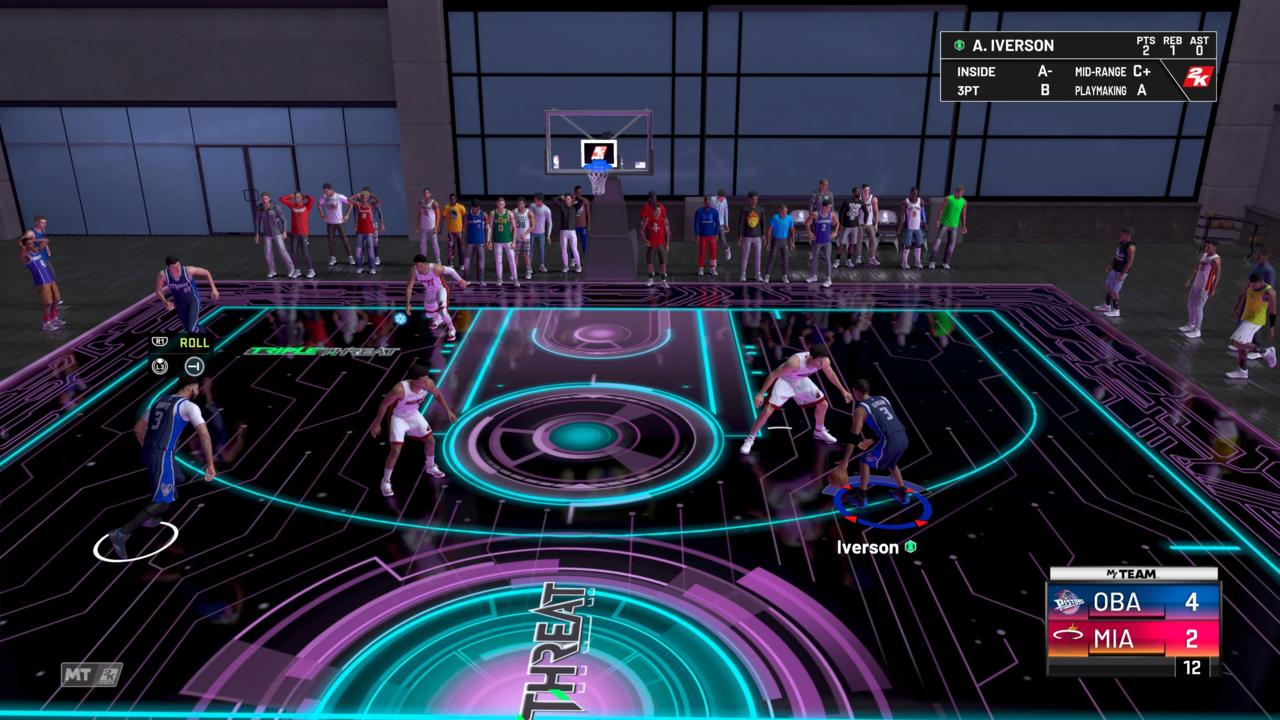
VC permeates the MyTeam mode again, too. This mode acts as a fantasy-esque build-your-own-team endeavor where you earn card packs to unlock players among a roster that spans multiple NBA eras. MyTeam can be captivating for long-time basketball fans such as myself who have Allen Iverson teamed up with Anthony Davis and can take this dream team roster into single-player or multiplayer matches. However, the loot-box nature of earning card packs--which can be obtained by slowly earning MT points through new avenues like challenges, seasonal events, and turning in useless cards, or by buying them with VC--makes the reliance on VC unsurprisingly egregious.
MyGM, which puts you in the shoes of a team's General Manager, is a mode worth mentioning. You call the shots for everything from roster moves, trades, ticket prices, marketing, and personnel decisions in hopes of building a successful franchise. It's a sports management simulation dream, but changes here are only skin deep. You'll go through awkwardly written and animated dialogue scenarios to manage relationships within your organization--like how I chatted to RJ Barrett about how he used to play clarinet in order to boost his morale stats, or became the yes-man of head coach Tom Thibodeau to keep him happy. MyGM's menus are also flooded in a way that makes it difficult to navigate and get a grip of how to spend your limited time and resources through the season. I've really enjoyed this mode in the past with its RPG-like sensibilities, but it's one that needs a serious revamp.
I can run down every other mode of play or feature in NBA 2K21, but I'd really just be going through the laundry list of things we've seen in years past--although I do want to point to the continued inclusion of the WNBA. It's a great feature for current fans and those who want to familiarize themselves with WNBA teams and players. Where this falls short is that the WNBA is relegated to just season play, and the inclusion of female player creation is only featured in the upcoming next-gen versions of the game.
NBA 2K21 shows that the lone basketball sim we have now has largely stagnated. It's a full package, for sure, but one that demonstrates little-to-no motivation to meaningfully improve upon itself. That doesn't take away from the strong foundation that makes NBA 2K a fun and rewarding time. However, when you go through the same grind and the same process with only superficial changes, you just get burnt out faster than years prior. If ball is still life, NBA 2K21 is as good a version as any to pick, although even the greatest ballers need a rest.